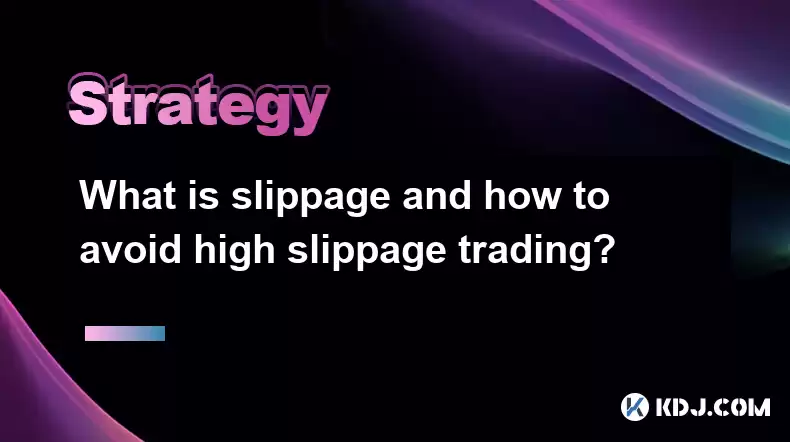-
 Bitcoin
Bitcoin $119300
2.40% -
 Ethereum
Ethereum $4254
-0.20% -
 XRP
XRP $3.184
-1.38% -
 Tether USDt
Tether USDt $1.000
0.00% -
 BNB
BNB $803.9
0.58% -
 Solana
Solana $183.1
1.50% -
 USDC
USDC $0.0000
0.01% -
 Dogecoin
Dogecoin $0.2339
-2.87% -
 TRON
TRON $0.3384
0.88% -
 Cardano
Cardano $0.8018
-0.29% -
 Hyperliquid
Hyperliquid $45.13
3.14% -
 Chainlink
Chainlink $22.10
0.96% -
 Stellar
Stellar $0.4439
-0.94% -
 Sui
Sui $3.875
-0.73% -
 Bitcoin Cash
Bitcoin Cash $570.7
0.24% -
 Hedera
Hedera $0.2589
-2.90% -
 Ethena USDe
Ethena USDe $1.001
-0.01% -
 Avalanche
Avalanche $23.83
-1.73% -
 Litecoin
Litecoin $123.8
2.61% -
 Toncoin
Toncoin $3.351
-1.13% -
 UNUS SED LEO
UNUS SED LEO $9.103
1.13% -
 Shiba Inu
Shiba Inu $0.00001356
-1.40% -
 Uniswap
Uniswap $10.93
-0.19% -
 Polkadot
Polkadot $4.057
-1.97% -
 Dai
Dai $1.000
0.01% -
 Cronos
Cronos $0.1646
4.66% -
 Ethena
Ethena $0.7974
8.11% -
 Pepe
Pepe $0.00001208
-2.89% -
 Bitget Token
Bitget Token $4.445
-1.70% -
 Monero
Monero $268.8
-2.00%
What is slippage and how to avoid high slippage trading?
Understanding slippage, which can impact trades by causing the actual executed price to deviate from the expected price due to rapid market changes, is crucial for optimizing trading performance.
Feb 25, 2025 at 08:37 am

Key Points:
Understanding Slippage:
- Definition of slippage and its impact on trades
- Factors influencing slippage
Minimizing Slippage:
- Choosing exchanges with high liquidity
- Trading during off-peak hours
- Using limit orders instead of market orders
- Managing order size
What is Slippage and How Does it Impact Trades?
Slippage refers to the difference between the expected price of a trade and the actual executed price. It occurs when market conditions change rapidly between the time an order is placed and when it is executed, resulting in a deviation from the intended price.
Slippage can have significant consequences for traders, especially during periods of high volatility. A large slippage can lead to substantial losses or reduced profits. Understanding slippage is crucial to mitigate its effects and optimize trading performance.
Factors Influencing Slippage:
Various factors contribute to slippage, including:
- Liquidity: Higher liquidity, indicating a greater volume of buyers and sellers, generally reduces slippage as it ensures there are sufficient orders to accommodate upcoming trades.
- Market Volatility: Rapid market movements, such as sharp price fluctuations or news events, can increase slippage as they lead to wide bid-ask spreads, making it harder to execute trades at the desired price.
- Order Size: Larger orders have a greater tendency to cause slippage as they may exceed the available liquidity at the desired price level, resulting in execution at less favorable prices.
- Order Type: Market orders, which are executed immediately at the best available price, are more prone to slippage than limit orders, which allow traders to specify the desired execution price.
Minimizing Slippage in Cryptocurrency Trading:
Implementing certain strategies can effectively reduce the impact of slippage on trades:
- Choose Exchanges with High Liquidity: Select exchanges with a substantial trading volume for the desired cryptocurrency, ensuring sufficient liquidity to facilitate trades without excessive slippage.
- Trade During Off-Peak Hours: Consider trading during periods of lower market activity, such as late at night or over weekends, when liquidity is typically reduced and slippage is generally lower.
- Use Limit Orders: Unlike market orders that execute immediately at the prevailing market price, limit orders allow traders to set the desired execution price. By specifying a limit price, traders can mitigate the risk of slippage during periods of high market volatility.
- Manage Order Size: To minimize slippage, break down large orders into smaller batches, which are more likely to be filled at favorable prices without significantly affecting market conditions.
FAQs:
Q: What is positive slippage?
A: Positive slippage occurs when the executed price is more favorable than the intended price. While less common, it can happen in rapidly changing markets when the price moves in the trader's favor between order placement and execution.
Q: Can slippage be eliminated?
A: Eliminating slippage entirely is not feasible as it is a natural consequence of market dynamics. However, by employing effective slippage minimization strategies, traders can significantly reduce its negative impact on their trades.
Q: How does slippage affect stop-loss orders?
A: Slippage can lead to stop-loss orders being triggered at prices far from the intended trigger point. To mitigate this, traders should place stop-loss orders with sufficient buffer to account for potential slippage.
Q: What is the role of trading bots in managing slippage?
A: Trading bots can assist in managing slippage by swiftly placing and canceling multiple orders, effectively reducing the risk of large slippage. However, it's essential to use bots with caution and ensure they are well-parameterized to avoid unintended consequences.
Disclaimer:info@kdj.com
The information provided is not trading advice. kdj.com does not assume any responsibility for any investments made based on the information provided in this article. Cryptocurrencies are highly volatile and it is highly recommended that you invest with caution after thorough research!
If you believe that the content used on this website infringes your copyright, please contact us immediately (info@kdj.com) and we will delete it promptly.
- KiwiSavers, Crypto Returns, and Digital Investment: Are Kiwis Missing Out?
- 2025-08-11 06:30:11
- Ruvi AI's Sales Surge: Could It Outpace Tron in the Crypto Race?
- 2025-08-11 06:30:11
- Meme Coin Mania: Is Shiba Inu Out and Little Pepe In?
- 2025-08-11 06:50:12
- Bitcoin Casino Weekly Challenge: Hitting the Jackpot in Crypto Gaming
- 2025-08-11 06:50:12
- Cardano (ADA): Riding the Bull Cycle Wave to New Heights?
- 2025-08-11 07:10:12
- Bitcoin Institutional Holdings in 2025: A Bullish Outlook
- 2025-08-11 07:15:19
Related knowledge

How to use stop-loss orders to limit potential losses?
Aug 08,2025 at 02:01pm
Understanding Stop-Loss Orders in Cryptocurrency TradingA stop-loss order is a risk management tool used by traders to automatically sell a cryptocurr...

What are the most promising altcoins to invest in?
Aug 10,2025 at 11:42am
Understanding the Role of Private Keys in Cryptocurrency WalletsIn the world of cryptocurrency, private keys are the cornerstone of ownership and cont...

How to read cryptocurrency charts and use technical analysis?
Aug 08,2025 at 11:08am
Understanding the Basics of Cryptocurrency ChartsCryptocurrency charts are graphical representations of price movements over time. These charts are es...

What is the difference between long-term holding (HODLing) and short-term trading?
Aug 10,2025 at 05:30pm
Understanding HODLing in the Cryptocurrency SpaceThe term HODL originated from a typo in a 2013 Bitcoin forum post and has since become a widely accep...

How to do your own research (DYOR) before investing in a crypto project?
Aug 08,2025 at 09:07pm
Understanding the Core Principles of DYOR in CryptocurrencyEngaging in due diligence before investing in any cryptocurrency project is essential to mi...

How to build a diversified crypto portfolio?
Aug 09,2025 at 12:21pm
Understanding the Importance of Diversification in CryptoDiversification in the cryptocurrency space is a strategy used to reduce risk by spreading in...

How to use stop-loss orders to limit potential losses?
Aug 08,2025 at 02:01pm
Understanding Stop-Loss Orders in Cryptocurrency TradingA stop-loss order is a risk management tool used by traders to automatically sell a cryptocurr...

What are the most promising altcoins to invest in?
Aug 10,2025 at 11:42am
Understanding the Role of Private Keys in Cryptocurrency WalletsIn the world of cryptocurrency, private keys are the cornerstone of ownership and cont...

How to read cryptocurrency charts and use technical analysis?
Aug 08,2025 at 11:08am
Understanding the Basics of Cryptocurrency ChartsCryptocurrency charts are graphical representations of price movements over time. These charts are es...

What is the difference between long-term holding (HODLing) and short-term trading?
Aug 10,2025 at 05:30pm
Understanding HODLing in the Cryptocurrency SpaceThe term HODL originated from a typo in a 2013 Bitcoin forum post and has since become a widely accep...

How to do your own research (DYOR) before investing in a crypto project?
Aug 08,2025 at 09:07pm
Understanding the Core Principles of DYOR in CryptocurrencyEngaging in due diligence before investing in any cryptocurrency project is essential to mi...

How to build a diversified crypto portfolio?
Aug 09,2025 at 12:21pm
Understanding the Importance of Diversification in CryptoDiversification in the cryptocurrency space is a strategy used to reduce risk by spreading in...
See all articles

























































































